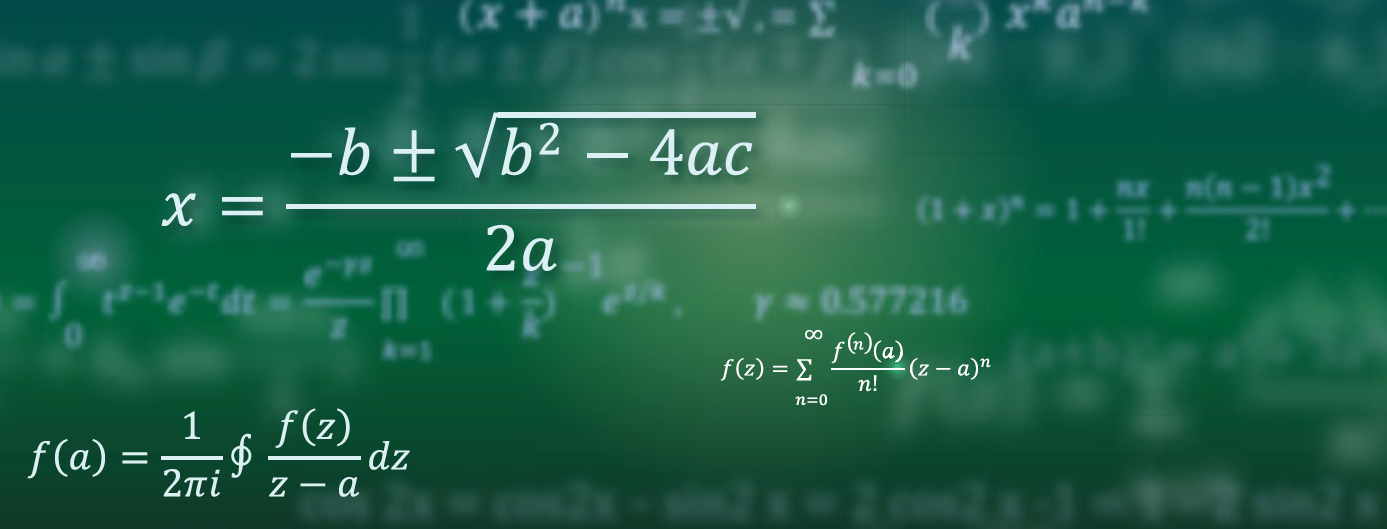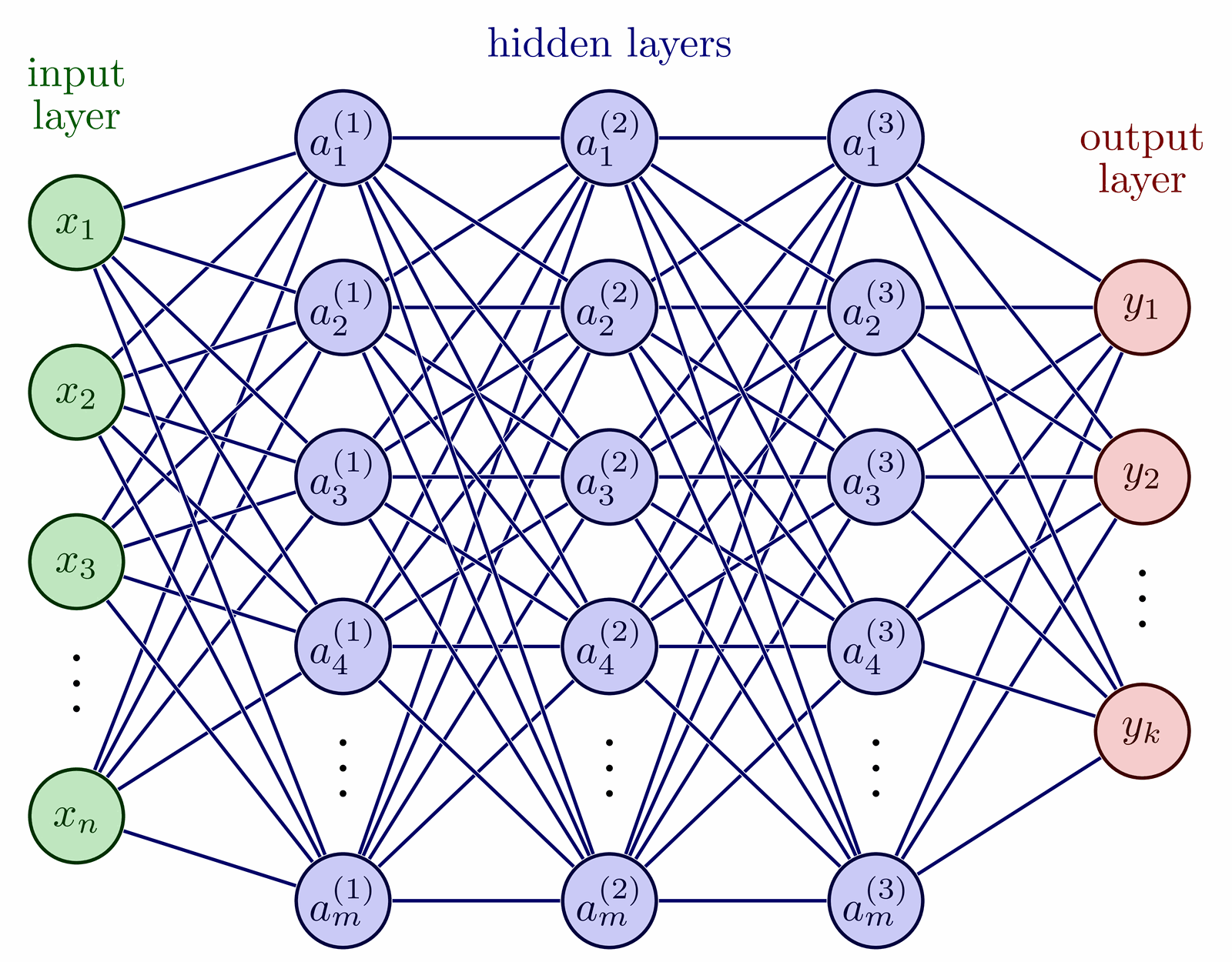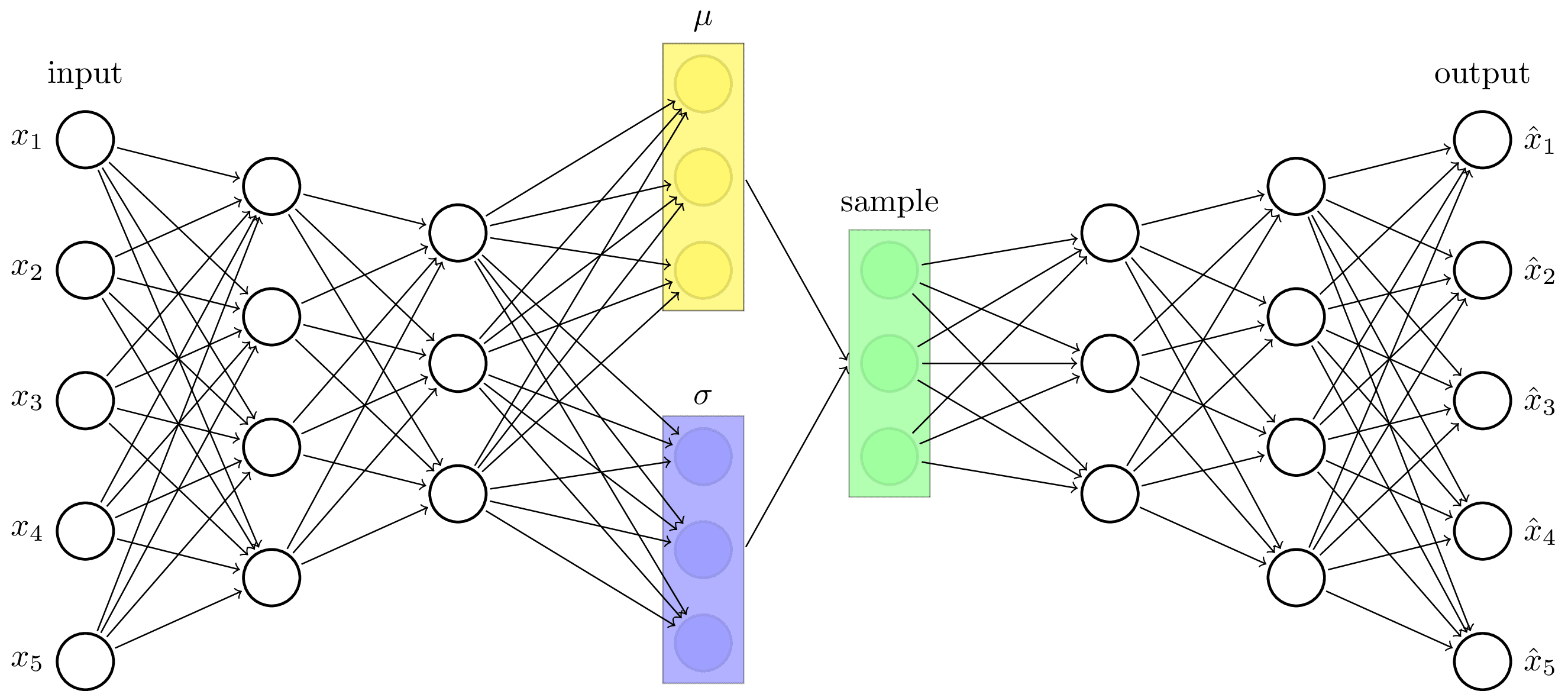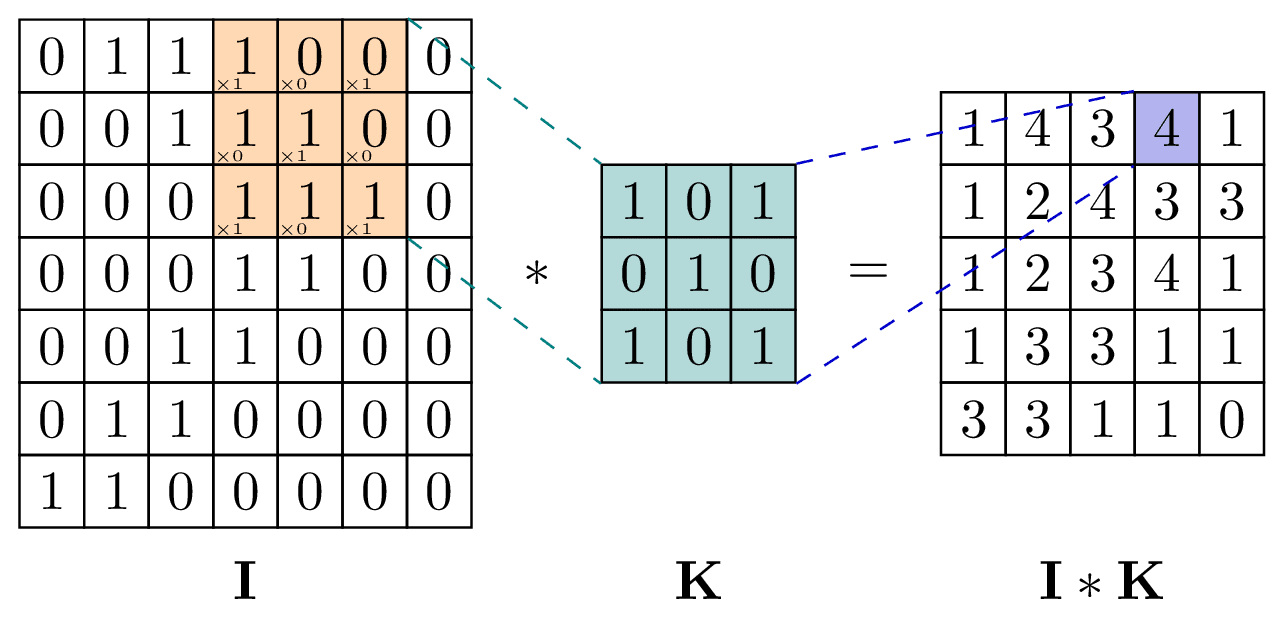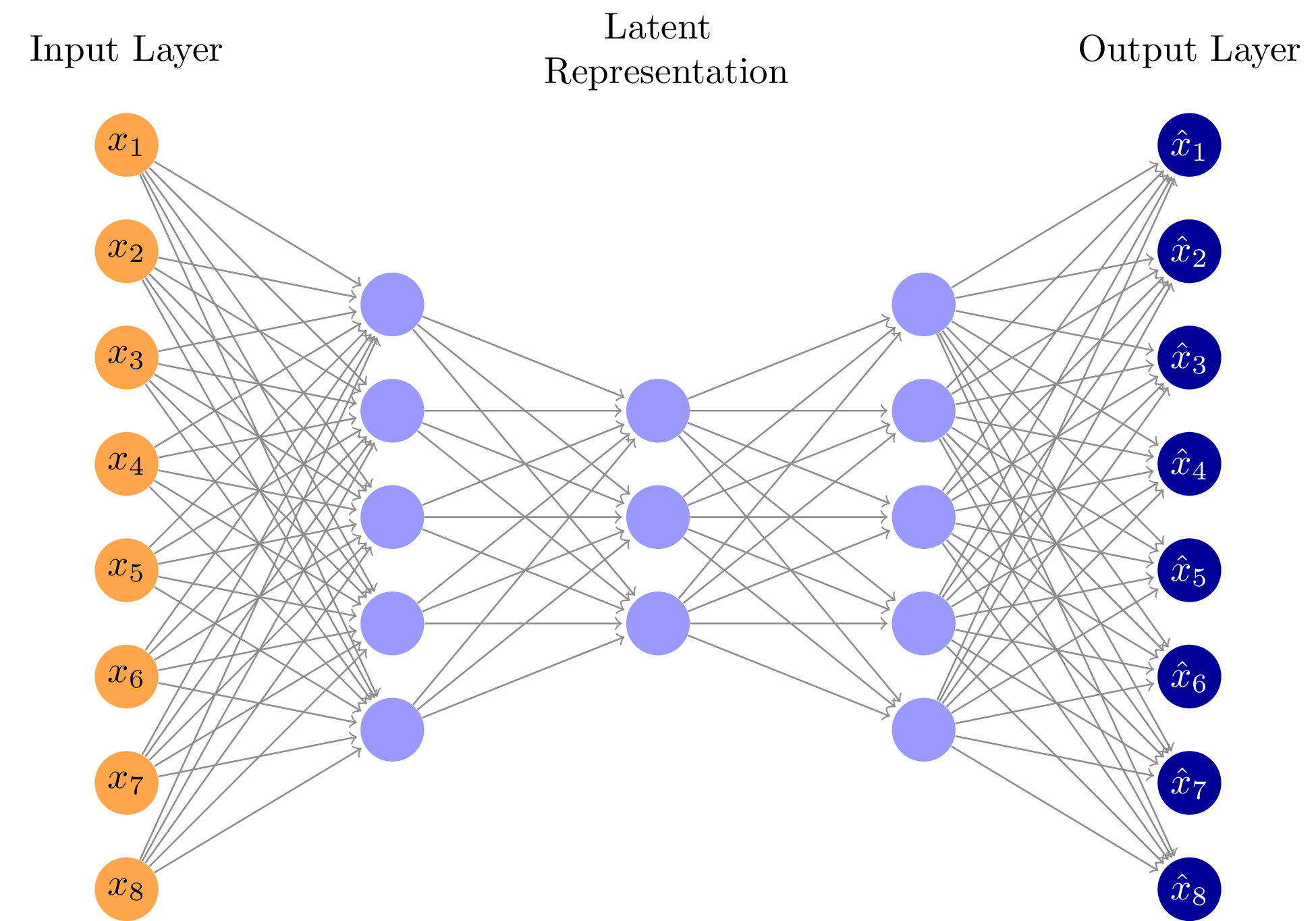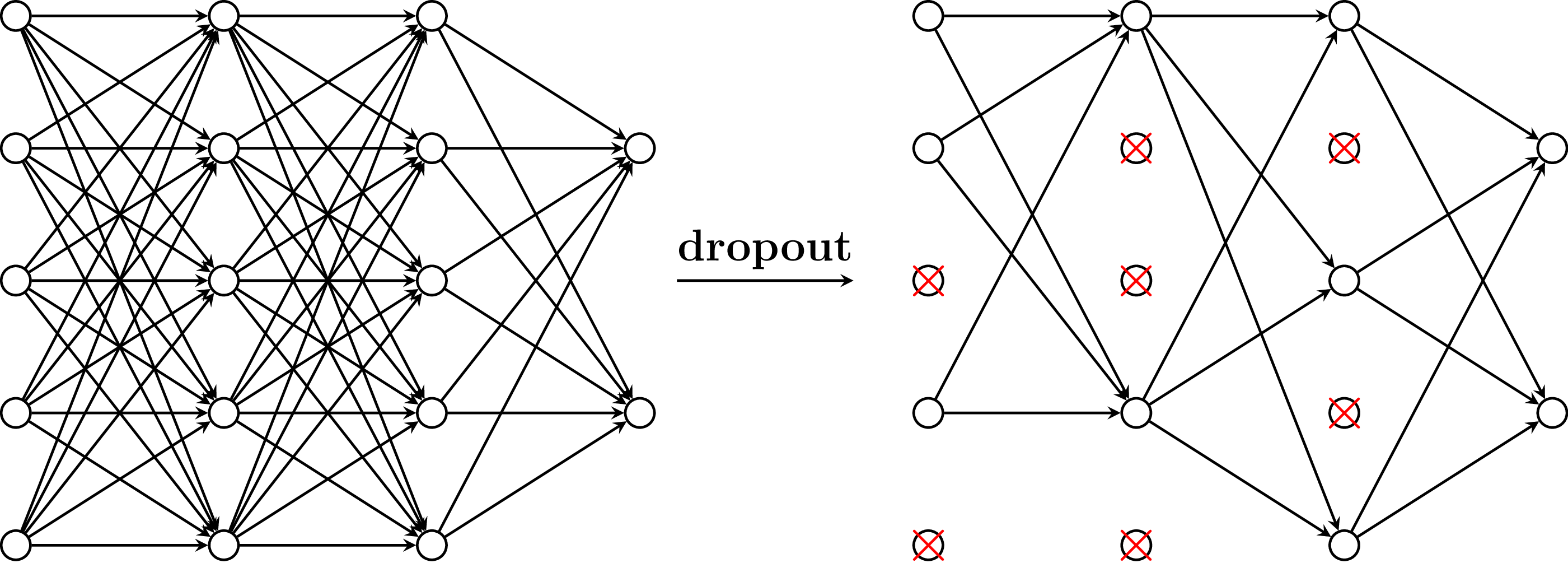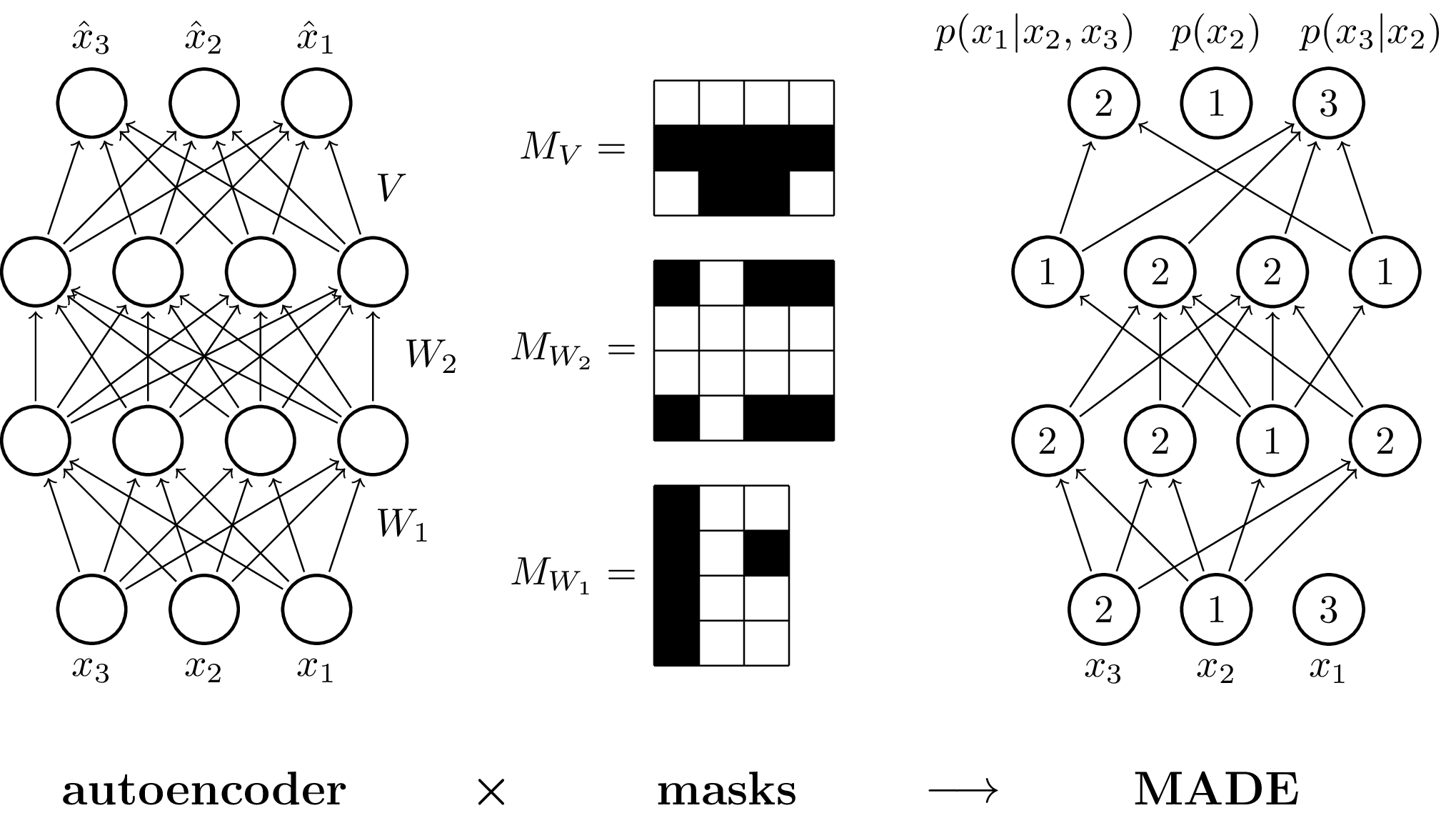Edit and compile if you like:
\documentclass[tikz]{standalone}
\usetikzlibrary{calc}
\def\layersep{3cm}
\newcommand\nn[1]{
% Input layer
\foreach \y in {1,...,2}
\node[neuron, fill=green!40] (i\y-#1) at (0,\y+1) {$i\y$};
% Hidden layer
\foreach \y in {1,...,4}
\path node[neuron, fill=blue!40] (h\y-#1) at (\layersep,\y) {$h\y$};
% Output node
\node[neuron, fill=red!40] (o-#1) at (2*\layersep,2.5) {$o$};
% Connect every node in the input layer with every node in the hidden layer.
\foreach \source in {1,...,2}
\foreach \dest in {1,...,4}
\path (i\source-#1) edge (h\dest-#1);
% Connect every node in the hidden layer with the output layer
\foreach \source in {1,...,4}
\path (h\source-#1) edge (o-#1);
}
\begin{document}
\begin{tikzpicture}[
scale=1.2,
shorten >=1pt,->,draw=black!70, node distance=\layersep,
neuron/.style={circle,fill=black!25,minimum size=20,inner sep=0},
edge/.style 2 args={pos={(mod(#1+#2,2)+1)*0.33}, font=\tiny},
distro/.style 2 args={
edge={#1}{#2}, node contents={}, minimum size=0.6cm, path picture={\draw[double=orange,white,thick,double distance=1pt,shorten >=0pt] plot[variable=\t,domain=-1:1,samples=51] ({\t},{0.2*exp(-100*(\t-0.05*(#1-1))^2 - 3*\t*#2))});}
},
weight/.style 2 args={
edge={#1}{#2}, node contents={\pgfmathparse{0.35*#1-#2*0.15}\pgfmathprintnumber[fixed]{\pgfmathresult}}, fill=white, inner sep=2pt
}
]
\nn{regular}
\begin{scope}[xshift=8cm]
\nn{bayes}
\end{scope}
% Draw weights for all regular edges.
\foreach \i in {1,...,2}
\foreach \j in {1,...,4}
\path (i\i-regular) -- (h\j-regular) node[weight={\i}{\j}];
\foreach \i in {1,...,4}
\path (h\i-regular) -- (o-regular) node[weight={\i}{1}];
% Draw distros for all Bayesian edges.
\foreach \i in {1,...,2}
\foreach \j in {1,...,4}
\path (i\i-bayes) -- (h\j-bayes) node[distro={\i}{\j}];
\foreach \i in {1,...,4}
\path (h\i-bayes) -- (o-bayes) node[distro={\i}{1}];
\end{tikzpicture}
\end{document}
Click to download: regular-vs-bayes-nn.tex
Open in Overleaf: regular-vs-bayes-nn.tex
This file is available on tikz.netlify.app and on GitHub and is MIT licensed.
See more on the author page of Janosh Riebesell..

